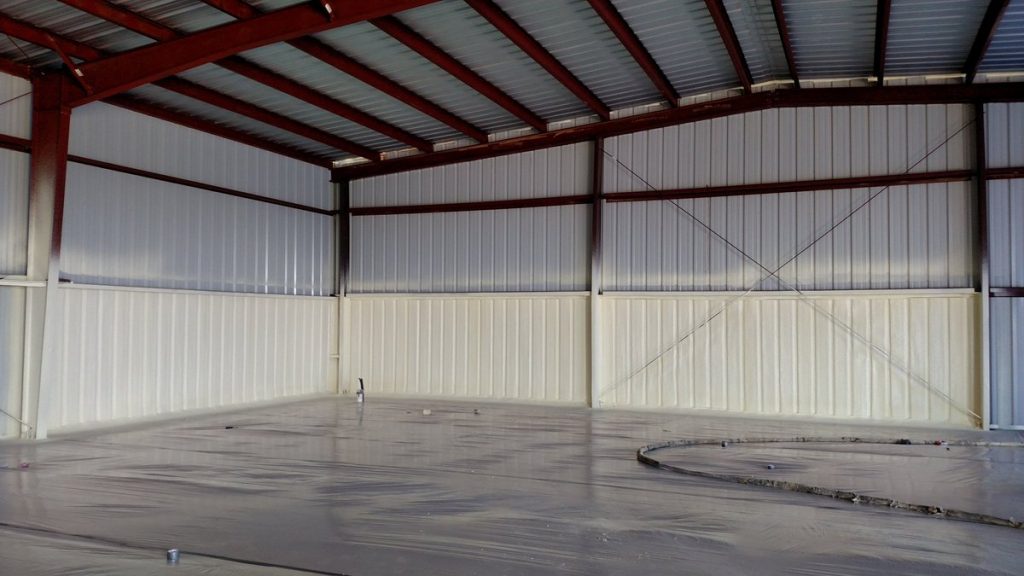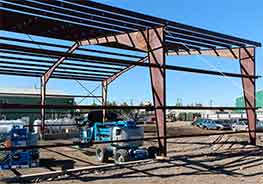Introduction
In the landscape of construction and architecture, the utilization of metal buildings alberta has witnessed a significant surge in recent years, particularly in Canada. The fusion of innovation, efficiency, and sustainability has propelled metal buildings into the spotlight, reshaping the architectural narrative of the Great White North. This article delves into the phenomenon of metal buildings in Canada, exploring their rise, benefits, and implications for the construction industry and the environment.
The Emergence of Metal Buildings in Canada
Traditionally, Canada's architectural fabric has been woven with structures primarily constructed from wood, concrete, and brick. However, the advent of metal buildings has introduced a new paradigm, offering unparalleled versatility and efficiency. The shift towards metal buildings can be attributed to several factors:
- Durability and Resilience: Metal buildings are renowned for their durability and resilience against harsh Canadian climates, including heavy snow loads, intense winds, and fluctuating temperatures. This robustness ensures longevity, reducing the need for frequent maintenance and repair.
- Speed of Construction: Prefabricated metal building components enable rapid construction, significantly reducing project timelines. In a country where weather conditions can impede traditional construction methods, the efficiency of metal building assembly is a game-changer.
- Customization Options: Contrary to common misconceptions, metal buildings offer extensive customization options, allowing architects and builders to create aesthetically pleasing and functional structures tailored to the client's specifications.
- Sustainability Credentials: With growing environmental consciousness, the sustainability of construction materials has become paramount. Metal buildings excel in this aspect, as steel is one of the most recycled materials globally, reducing carbon footprint and promoting eco-friendly construction practices.

The Benefits of Metal Buildings
The allure of metal buildings lies in their myriad of benefits, which resonate with both builders and occupants alike:
- Cost-Efficiency: Metal buildings boast a favorable cost-to-benefit ratio, offering significant savings in construction expenses without compromising quality. The streamlined construction process minimizes labor costs, while the durability of metal structures translates to long-term savings in maintenance and operational expenses.
- Versatility and Adaptability: Whether for commercial, industrial, or residential purposes, metal buildings offer unparalleled versatility. From warehouses and factories to offices and recreational facilities, metal structures can be adapted to suit diverse applications, accommodating evolving needs and functions.
- Energy Efficiency: The energy efficiency of metal buildings is a key selling point, especially in a country like Canada where energy consumption is a pressing concern. Advanced insulation systems, coupled with reflective roofing materials, ensure optimal thermal performance, reducing heating and cooling expenses year-round.
- Safety and Security: Metal buildings prioritize safety and security, featuring robust structural integrity and fire-resistant properties. This enhances occupant safety and provides peace of mind, particularly in industrial settings where stringent safety regulations apply.
Metal Buildings and Sustainable Development
In an era marked by climate change and environmental degradation, the construction industry plays a pivotal role in advancing sustainable development goals. Metal buildings emerge as catalysts for sustainability, embodying principles of resource efficiency and environmental stewardship:
- Reduced Environmental Impact: The use of steel in metal buildings significantly reduces environmental impact compared to traditional construction materials. Steel is inherently recyclable, with a high recycled content, thus minimizing waste generation and conserving natural resources.
- Energy Conservation: The energy-efficient design of metal buildings translates to reduced energy consumption throughout the building's lifecycle. By optimizing insulation, minimizing air leakage, and harnessing natural light, metal buildings contribute to energy conservation and mitigate greenhouse gas emissions.
- Adaptation to Climate Change: As Canada grapples with the effects of climate change, the resilience of metal buildings becomes increasingly relevant. Their ability to withstand extreme weather events, such as heavy snow loads and high winds, ensures continuity of operations and minimizes disruptions, bolstering community resilience.
- Promotion of Green Building Practices: Metal buildings exemplify green building practices, aligning with sustainability certifications such as LEED (Leadership in Energy and Environmental Design). By integrating renewable energy systems, employing recycled materials, and optimizing water efficiency, metal buildings set a precedent for sustainable construction practices.
Challenges and Future Outlook
Despite the myriad benefits of metal buildings, certain challenges persist, ranging from perceptions regarding aesthetics to regulatory barriers. However, ongoing innovations in design, technology, and material science are poised to address these challenges, further solidifying the position of metal buildings as the cornerstone of modern construction in Canada.
Looking ahead, the future of metal buildings in Canada appears promising, fueled by a convergence of factors including technological advancements, market demand, and regulatory support. As sustainability continues to gain prominence on the national agenda, metal buildings are poised to play a pivotal role in shaping the built environment of tomorrow, fostering resilience, efficiency, and environmental responsibility.

Conclusion
The ascent of metal buildings alberta heralds a new era of construction characterized by innovation, efficiency, and sustainability. From their inception as utilitarian structures to their evolution as architectural marvels, metal buildings have transcended conventional boundaries, leaving an indelible mark on the Canadian landscape. As we navigate the complexities of a rapidly changing world, metal buildings stand as beacons of progress, embodying the principles of resilience, adaptability, and environmental stewardship. In embracing the transformative potential of metal buildings, Canada paves the way toward a more sustainable and resilient future for generations to come.





